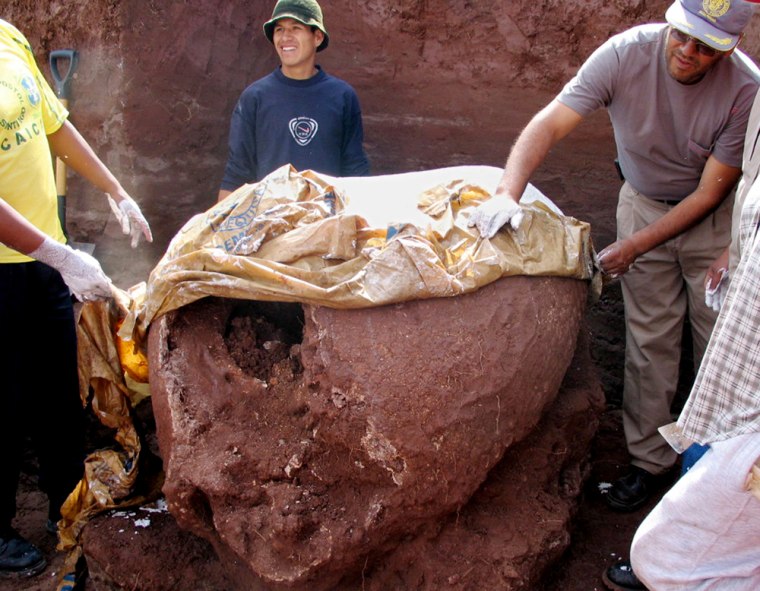Builders have found the fossil of a giant armadillo — which lived up to 2 million years ago and would have been the size of a Volkswagen Beetle — in southern Peru, an archaeologist said Thursday.
“They were carrying out work inside a private home and stumbled upon this surprise during the digging,” Pedro Luna, an archaeologist from the National Institute of Culture in the southern city of Cusco, told Reuters.
The armadillo order first evolved around 50 million years ago in South America. The type found in Cusco was a glyptodon, one of the biggest ancient armadillos from the Ice Ages.
“It was an animal that appeared 2 million years before Christ and would have died out 10,000 to 15,000 years B.C. because of a freeze,” Luna said.
He said the fossil was “almost complete” and was 6-foot-6 (2 meters) long including the tail, 3-foot-6 (1 meter) wide, with an average height of 3 feet (90 centimeters).
He said the animal would have been the size of “a Volkswagen.”
Luna said it was the fifth such fossil found since 1998 in Cusco, proving that there was a large lake and valley in the area with lush vegetation. Armadillos are herbivores.
The glyptodon — which means “carved tooth” — had short legs with clawed toes, a dome-shaped bony shell composed of plates measuring 0.4 to 2.8 inches (1 to 7 centimeters) thick, rings of bony armor on its tail and armor on its head.
